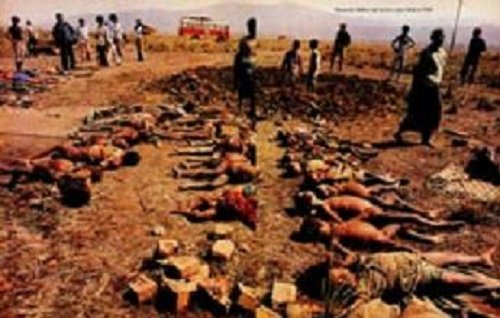
Abantika Ghosh of Indian Express visits Nellie in Assam that witnessed the horrific massacre of more than 3000 Muslims in February 1983 and finds that wounds are far from healed as the Congress and BJP lock horns
Abantika Ghosh | Indian Express
[dropcap]1[/dropcap]800 or 3000. Thirty-three years on, Nellie is still debating how many people died in the massacre that brought it national and international notoriety. Every election season, that debate acquires a fever pitch. The disparity between the official and unofficial figures of victims of the Nellie massacre has provided political capital to parties across the divide in the reserved constituency of Jagiroad.
But on the ground in the half moon arc around the stretch of Kolong river between Aamlighat and Dharampul, nothing much has changed from that February day in 1983 when Bengali-speaking people, many of them Muslims, were targeted in central Assam. Hutments are still made of bamboo mats, the inflammable material that made them burn so easily that fateful day. Only, every second man one now meets has a tale of horror and often a scar to show from then.
Showing a sickle-shaped scar on his hand and another deeper scar on his back, Ataur Rehman says, “I don’t remember how old I was but I hadn’t even started growing a beard when it happened. They beat me up, attacked me with an axe, killed my mother and sister. There was a mob surrounding us and all they would say is ‘Kill the Bangladeshis’. I haven’t walked straight since that day. We got Rs 5,000 for getting killed, those that killed us got Rs 50,000.”

As Abdul Malik, a shop owner, sums it up, “Everything we have got here is from the Congress. We did vote for the BJP during Lok Sabha elections but we have not even seen the candidate since then. Forget providing us work, the BJP does not even give us a bottle of whisky before elections.” Does Congress give whisky? “As we told you, everything we have is from the Congress.

